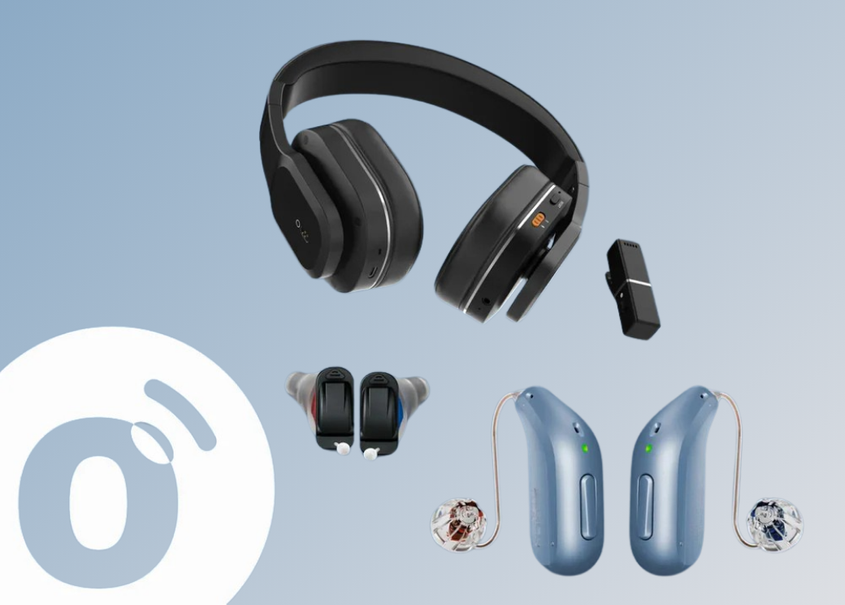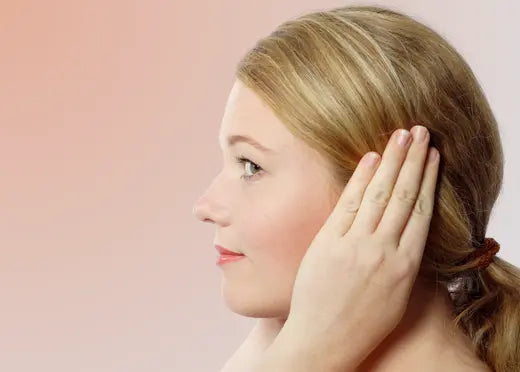Learn what hearing loss is, how it's diagnosed, and the solutions available for every level of hearing loss, from medical devices to listening assistants.
Definition and classification of hearing loss
For people with mild hearing loss, using a hearing aid for mild hearing loss like Spokeo can restore clear hearing without complex medical devices.
What exactly is hearing loss?
Hearing loss is a partial loss of hearing. Unlike profound deafness, it still allows some sounds to be perceived, but with less clarity or intensity.
Classification according to the degree of loss (mild, moderate, severe)
There are several levels of loss: mild (21-40 dB), moderate (41-70 dB), or severe (71-90 dB). This classification helps guide the most appropriate hearing solutions.
Types of hearing loss (conductive, sensorineural, mixed)
Hearing loss can result from a problem with mechanical transmission (outer or middle ear), nerve perception (inner ear), or a mixture of both (mixed hearing loss).
Typical evolution and progression
Hearing loss often progresses slowly. It can worsen with age, certain medical conditions, or prolonged exposure to unprotected noise.
Causes and risk factors
Natural aging (presbycusis)
Presbycusis is the most common cause of hearing loss. It appears gradually with age, particularly around the age of 60.
Traumatic sound exposures
Repeated noisy environments (construction sites, amplified music, etc.) promote wear and tear on the hair cells in the inner ear, often irreversibly.
Medical and pathological causes
Chronic ear infections, otosclerosis, autoimmune diseases or drug side effects can also cause hearing loss.
Genetic and hereditary factors
Certain family profiles present a predisposition to early or progressive hearing loss. Screening is recommended if there is a history of hearing loss.
Symptoms and warning signs
For people with mild to moderate hearing loss, using a hearing aid for mild hearing loss like Spokeo can facilitate communication and prevent isolation.
Characteristic conversational difficulties
Difficulty following a conversation with several people, or in a noisy environment, is often the first observable sign of partial hearing loss.
Social and behavioral symptoms
Isolation, fatigue from listening, the need to repeat, or a tendency to move away from groups are common signs.
Early signs often overlooked
Lowering the volume of audio devices, hearing less well on the phone or not perceiving certain high-pitched sounds (keys, flashing lights) can be revealing.
Self-assessment questionnaire
Simple tools exist to detect hearing loss early, through online or in-pharmacy tests. An ENT evaluation is recommended if in doubt.
Diagnosis and assessment of the degree of hearing loss
Essential Hearing Tests
Tonal and speech audiometry are essential for measuring hearing threshold and speech understanding according to frequencies.
Interpretation of the audiogram
This graph shows the degree of hearing loss in each ear. It helps you decide whether or not to consider a hearing aid.
Additional examinations sometimes necessary
MRI, CT scan, tympanometry or auditory evoked potentials may be prescribed in cases of asymmetry or suspicion of neurological origin.
Monitoring and development of hearing loss
Regular follow-up allows us to monitor the progress of hearing loss, adjust solutions and maintain good communication quality.
Solutions according to the level of hearing loss
Hearing aids vs. assistive listening devices
Medical hearing aids require a prescription, custom fitting, and follow-up. Hearing aids like Spokeo are more accessible, require no prescription, and are suitable for mild to moderate hearing loss.
Technologies adapted to each degree of loss
For mild hearing loss, simple, comfortable, and ready-to-use solutions like Spokeo help restore clear hearing in key everyday moments (conversations, TV, calls).
Why Spokeo is ideal for mild hearing loss
Spokeo offers intelligent sound filtering via a remote microphone and dual conduction (air and bone). This system captures only the voice of the speaker, even in noisy environments. It fits like a headset, requires no adjustments or maintenance, and requires no medical intervention.
Testimonials and concrete results
Users report a significant improvement in listening comprehension, a reduction in listening fatigue and an increase in relational comfort, both at home and in healthcare facilities.













